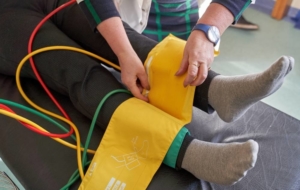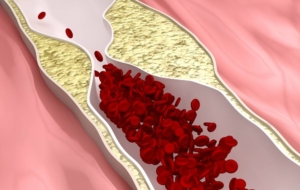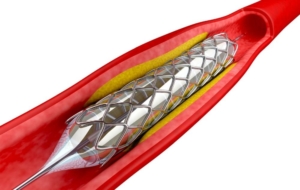You just turned 30 and you’re scheduled for your annual physical. You’re thinking it will be quick since you don’t have to worry about real health issues until your 50s…right? The doctor goes over common men’s health issues and you’re shocked to hear premature peripheral artery disease is on the list. But isn’t that for seniors? Not exactly.
You’re probably thinking to yourself that you’ve got enough on your plate to worry about when you get into your 30s, and you’d be right. Looking out for symptoms and getting tested for arterial disease is probably not on the top of the list. However, recent studies have suggested that the rate of peripheral vascular disease in young adults is rising. Thankfully, we’ll walk you through what premature PAD is, what signs to look out for, and how to get tested.
What Is Premature Peripheral Artery Disease?
Peripheral artery disease (PAD) refers to when plaque buildup within the arteries becomes severe, blocking blood flow to the lower extremities. These arterial blockages often lead to painful symptoms leading to decreased mobility and quality of life. Most people don’t have to worry about PAD until they are above 50 years old; however, premature peripheral artery disease can occur in men in their 20s, 30s, and 40s.
According to studies published by the National Center for Biotechnology Information (NCBI), premature vascular disease is considered to be rare, with less than one percent of the U.S. population affected. Even though it is uncommon, developing peripheral artery disease in your 30s or 40s is not unheard of and can be quite severe. Premature vascular disease is a progressive condition that needs to be treated as early as possible.
Additionally, premature peripheral artery disease is often misdiagnosed because it is more common for people over the age of 50 to develop arterial issues. Because PAD is so often overlooked, it’s important to consult a vascular specialist if you have a family history of vascular disease.
USA Vascular Centers can assist you with any questions you may have about treatment for premature peripheral artery disease. Call us at 888.773.2193 or conveniently contact us online to schedule a consultation.
How Common Is Peripheral Vascular Disease In Young Adults?
Premature peripheral artery disease affects less than one percent of men between the ages of 30 to 49 years of age. However, there are certain risk factors that could increase your risk. Some causes of premature vascular disease include:
- Unmanaged type 2 diabetes
- Family history or vascular disease, like PAD
- Smoking (or history of smoking) tobacco products
- Untreated high blood pressure or cholesterol
- Increased homocysteine levels from eating red meat
- High levels of fibrinogen in your bloodstream
If you’re at an increased risk of premature peripheral artery disease, communicate with your physician to minimize your risk.
Signs of Premature Peripheral Artery Disease
You may be wondering, how you can be proactive about premature vascular disease. Unfortunately if you have diabetes, PAD symptoms can easily be overlooked; therefore, it’s important to listen to your body and track what you are experiencing. A few signs of premature vascular disease to watch out for include:
- Pain in the legs, thighs, calves, ankles, or feet
- Poor leg hair or toenail growth
- Leg pain that stops when you’re at rest or if you elevate your feet
- Restless or achiness in your lower extremities that keeps you up at night
- Slow or non-healing wounds on the legs, ankles, feet, or toes
- Pale or blue-tinted legs
- Legs that feel cool to the touch
- Dull pain when walking for an extended amount of time
- Difficulty climbing stairs or getting into/out of the car
- Inability to raise one or both of your legs
If you are experiencing any of the above symptoms, it is pertinent you don’t ignore your leg pain. Additionally, some people with PAD will not exhibit any symptoms. In these cases, getting regularly checked for PAD is especially helpful.
When Should You Get Checked for Premature Vascular Disease?
Just because the common peripheral artery disease age is 50 or above, doesn’t mean you can skip seeing a vascular specialist. You should get checked for premature vascular disease if you have a family history of PAD or are experiencing limited mobility. Many people want to get checked to prevent heart attack, stroke, or amputation because peripheral artery disease in your 30s is becoming more common.
Whether you are at an increased risk of developing premature peripheral artery disease or experiencing a few of the early symptoms, an ankle-brachial index (ABI) can provide you with a proper diagnosis. An ABI test involves measuring your blood pressure in your ankle to the blood pressure in your bicep. Your doctor will determine if you have lower blood pressure in your leg compared to in your arm, this may suggest you have PAD.
A normal ABI measurement is between 1.0 to 1.4. However, if you get a 0.9 or lower on your ABI test, this means there is a blocked artery. This measurement will help your doctor understand how severe your premature peripheral artery disease truly is, which will affect which course of action they will take as far as treatment.
Why Is Getting Checked Important?
According to a study published in JAMA Internal Medicine, premature vascular disease that is left untreated can lead to gangrene, amputation, or even death. The study states that the prognosis for many patients with unmanaged premature peripheral artery disease is remarkably poor. This is most likely because many people under the age of 50 ignore early symptoms and decreased mobility. Ultimately, this leads to them avoiding activity and cultivating a sedentary life, leading to a faster progression of PAD.
Unfortunately, about 23% to 27% of those who didn’t actively manage their PAD symptoms were forced to undergo major leg amputations. Additionally, the study stated that nearly 60% of amputees died within five years due to complications of atherosclerosis. One reason for this is because amputation makes getting around even more difficult and can contribute to becoming more sedentary.
The best way to prevent premature vascular disease is to report any symptoms you may be experiencing to a vascular specialist. We know, these statistics can be worrisome; however, it’s important to know that peripheral vascular disease in young adults can be managed with the right plan of action.
How to Treat Premature Peripheral Artery Disease
Once you have received an ABI test and your doctor has determined the severity of your condition, you can discuss the best way to treat your premature vascular disease so it does not progress.
At USA Vascular Centers, our doctors personalize a treatment plan that fits your unique needs. Depending on the severity of your PAD, our specialists may suggest you try positive lifestyle changes. Adjustments to your diet and exercise regimen can reduce stress on your arteries. In addition, the cessation of smoking can directly impact arterial inflammation and plaque buildup. Managing your type 2 diabetes and lowering high blood pressure or cholesterol can also positively impact your condition.
Although, if your PAD has progressed further, your doctor may recommend a nonsurgical, outpatient procedure known as stent angioplasty. We use stent angioplasty to open arteries that have been narrowed by plaque buildup. Stent angioplasty is able to treat moderate to severe premature peripheral artery disease in your 30s, 40s, and beyond. Stent angioplasty can often prevent life-threatening issues like heart attack, stroke, and amputation caused by arterial blockages.
Like to learn more about treatment for premature peripheral artery disease in young adults? Give us a call at 888.773.2193 or conveniently contact us online to schedule a consultation.







